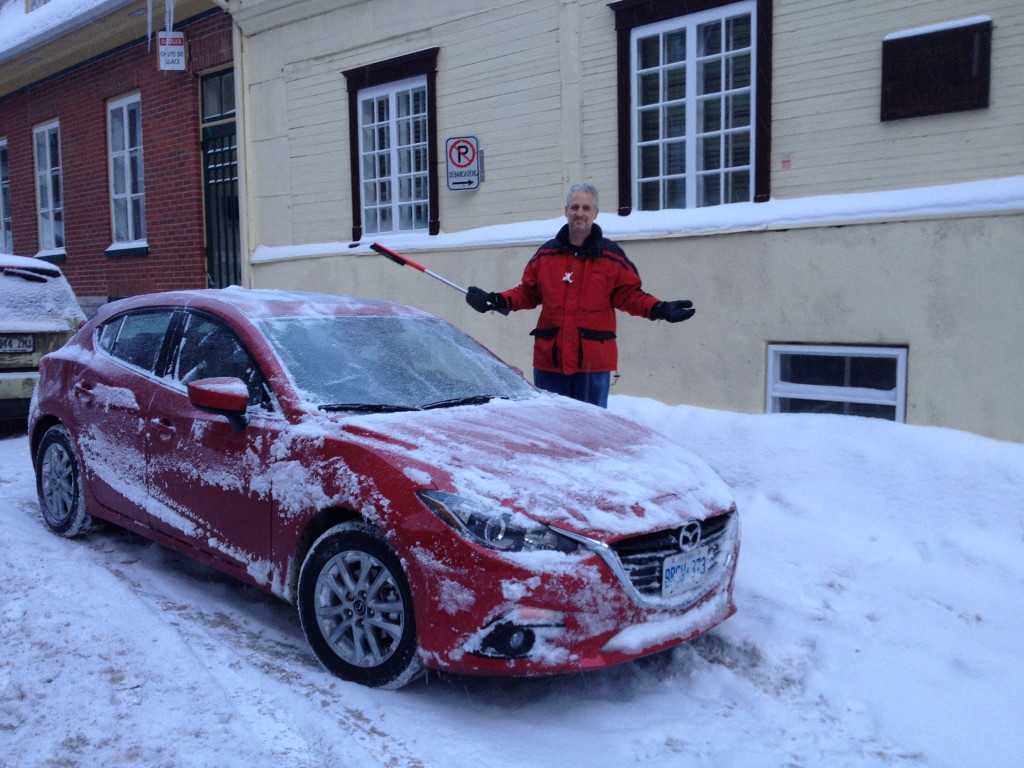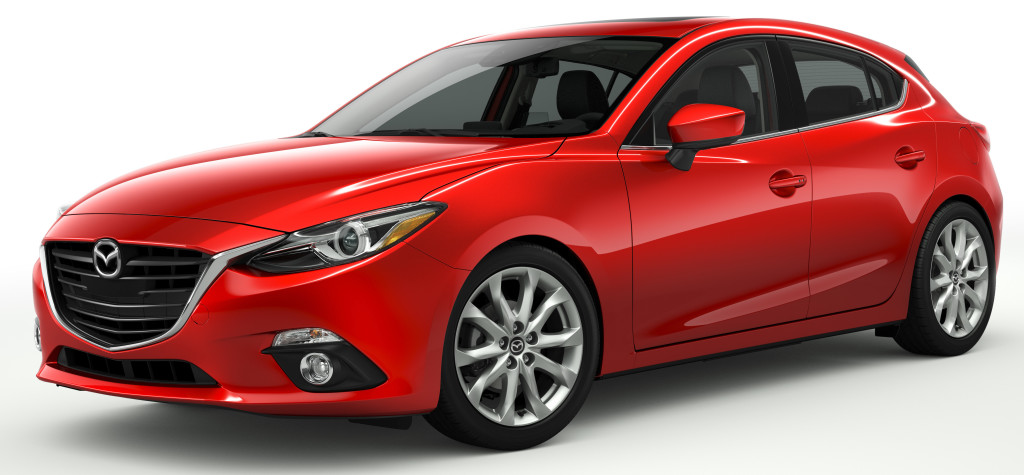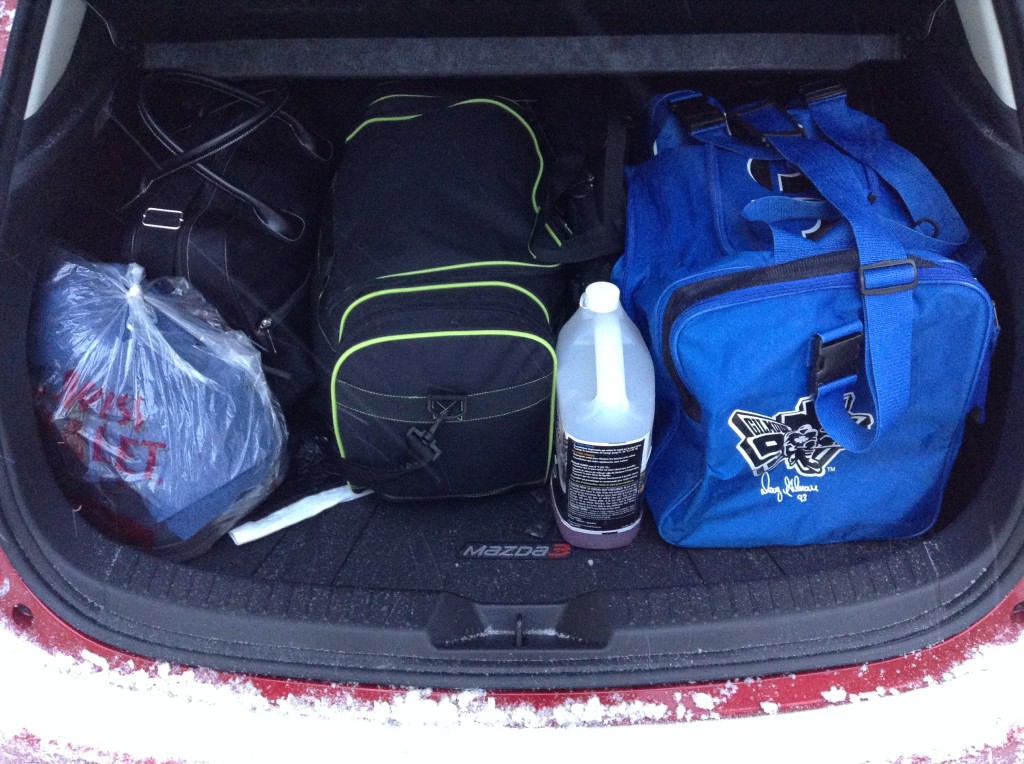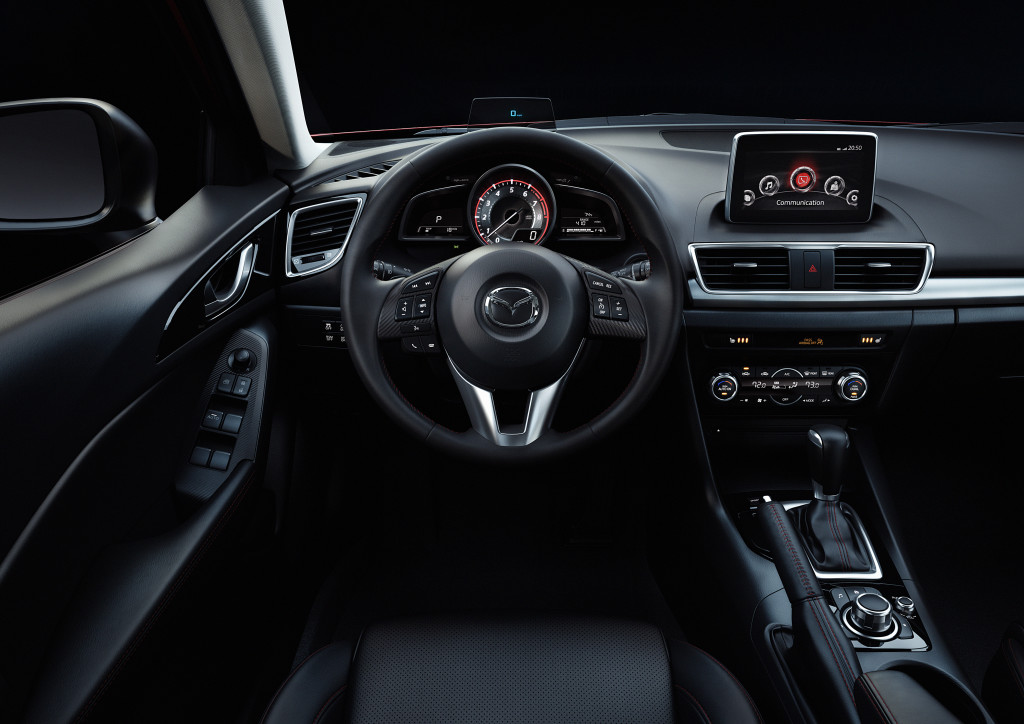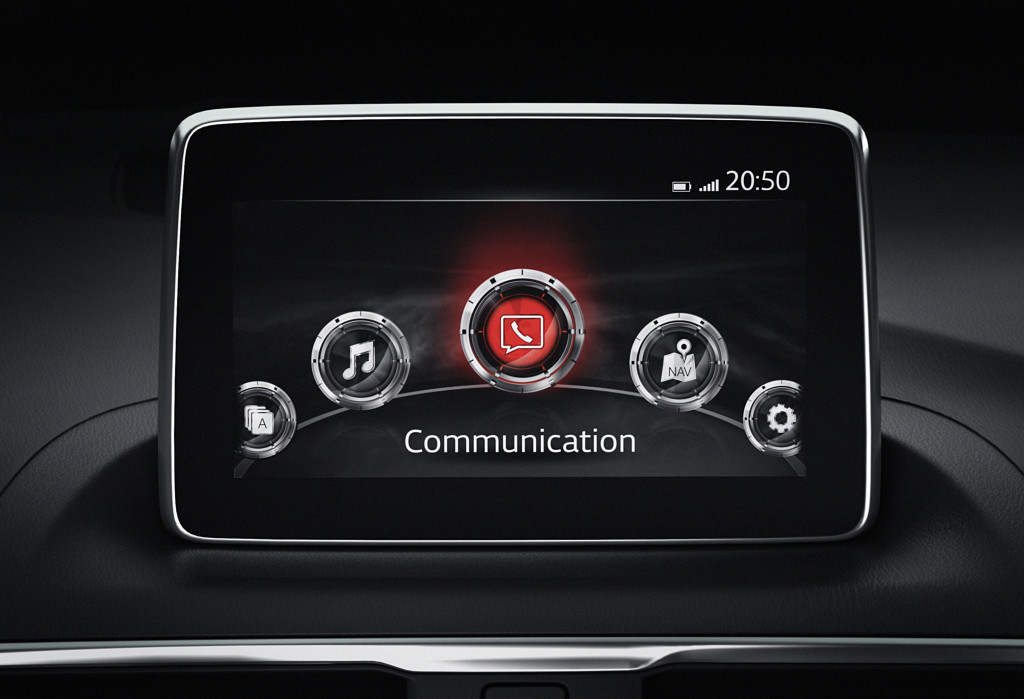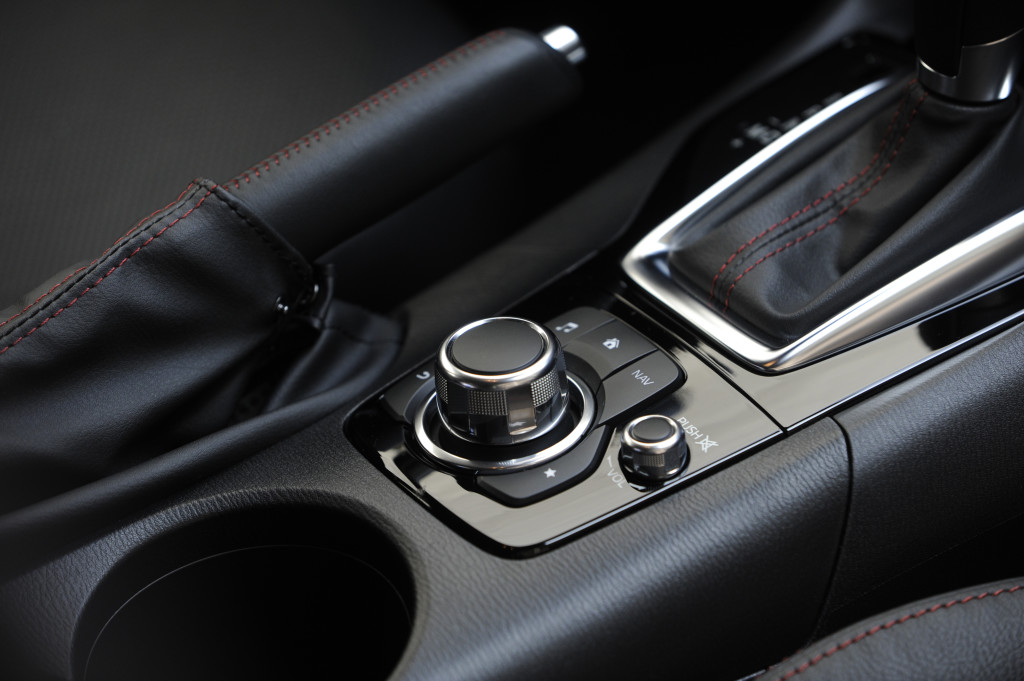Where do you go if you want to test a car’s technology? Why, to Québec City during Winter Carnival, of course!
That’s where I took a Soul Red Mica Mazda3 Sport. Significantly redone for 2014, it delivered on looks, from the vertical front grill sporting an oversize Mazda logo to the steeply raked window on the rear hatch door.
The 3 wasn’t at its most fetching buried under snow and ice, but it fared well when faced with typical Québec Winter Carnival weather conditions.
In case you’re wondering, the Mazda3 Sport looked more like this when I picked it up from Mazda Canada.
Cargo
I didn’t play hockey the week I drove the 3, so my shot of a trunk loaded for the trip will have to suffice. (The blue hockey bag contained not hockey equipment but skates so my girlfriend and I could enjoy skating the oval Carnival organizers created on the Plains of Abraham.)
Driving impressions
Winter tires, traction and stability control and the SKYACTIV-G 2.0L inline 4-cylinder kept the front-wheel-drive 3 behaving properly throughout our trip. It did yeoman’s service whether on cruise control on the highway or climbing Québec City roads so steep, adjacent sidewalks alternated with stairs.
Backing into our BnB’s narrow, snowy parking lane, the stability control light flashed on the dash, telling me what I already sensed. A quick readjustment and the 3 neatly tucked itself in. That traction control system/dynamic stability control indicator light (TCS/DSC) light flashed a few other times during the trip, but I had to accelerate harder than I ordinarily would in heavy winter conditions to get the 3 to slide even a little.
Unlike the 2.5L Mazda6 I tested late last year, I couldn’t manage many bouts of zero fuel consumption. The one time I made this happen, I was using the transmission to control the 3’s descent down a steep hill.
Simplifying technology controls
Though a technologically sophisticated car, my Mazda3 tester doesn’t overwhelm the driver with the number of controls available.
If anything, it slightly underwhelms at first glance. Climate and window defrost controls face out from the center console. Stalks on either side of the steering column feature typical light and wiper controls. Buttons on the steering wheel give quick access to radio, information and cruise controls.
A seven-inch touchscreen sticks up from the middle of the dash. It looks like a thick tablet placed on its side, and it seems removable (it isn’t).
Its placement meant that I didn’t need to divert my eyes far from the road ahead, and when I did, I saw the stuff I needed to see right away. Kudos for the design of various screens, from the radio dial to the compass that I kept on-screen during much of my time with the car.
Just in front of the six-speed shifter, Mazda threw in five buttons and two knobs, one large, one small. The small knob is a typical on/off/volume control, and for some reason I preferred using that to the buttons on the steering wheel.
The large knob is the “commander.” It also serves as a joystick that let me zip through on-screen choices using quick turns and pushes, as well as a button that let me activate the choice I wanted when I reached it. The commander, which substitutes for numerous controls, was about as easy to figure out as the on/off/volume knob, and that’s saying something.
Having these two knobs at hand kept me from ever needing to touch the screen. That, in turn, helped minimize the amount of attention I needed to devote to it as I drove, a safety plus.
Mazda offers quite a few technology options, not all of which were on my 3 tester. One I hope to try someday is the “heads-up display” pictured below, just above the speedometer.
To the left of the speedometer is a “P” to tell the driver the car is in park. My six-speed manual showed the numbers 1 through 6 (it may have shown “R” as well, but I wasn’t looking at the dash when the car was in reverse). The Mazda tells you when to shift up and down, and what gear to shift to, in order to maximize fuel efficiency. It’s a decent idea, though as a long-time driver of manual vehicles accustomed to shifting by the sound of the engine, I found this indicator superfluous.
Not much about this vehicle is superfluous, though. As long as drivers can access the vehicle’s features with the ease I experienced in the 3, they’ll be more likely to make safe use of them.
Conclusions
From styling to road feel to the cockpit experience to just about any facet of the car you want to examine, Mazda put out a winner with the 3. Don’t believe me? Check out the online trophy case Mazda built for the 3. It’s a practical, fun, stylish drive and I expect it’ll turn heads and win hearts wherever it goes.
